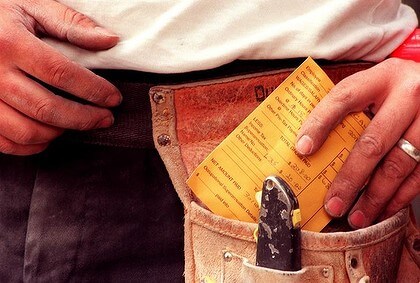As of July 1, 2012, businesses in the building and construction industry will now be required to report to the Australian Taxation Office with details of payments made to contractors for building and construction services. This will be in the form of submitting at the end of each financial year a Taxable Payments Annual Report. The changes recently introduced were a result of the 2012/13 Federal Budget announcement to improve compliance with tax obligations within the building and construction industry.
These new measures will apply to businesses who meet all of the following:
- your business is primarily in the building and construction industry;
- your business makes payments to contractors for building and construction services; and
- your business has an Australian Business Number (ABN)
Is your business primarily in the building and construction industry? Only if any of the following apply:
- in the current financial year, 50% or more of your business activity relates to building and construction services; or
- in the current financial year, 50% or more of your business income is derived from providing building and construction services; or
- in the financial year immediately before the current financial year, 50% or more of your business income was derived from providing building and construction services
The Taxable Payment Annual Report will be due on July 21 of each year; therefore the first report is due by July 21, 2013 for the 2012/13 financial year.
WHAT NEEDS TO BE REPORTED?
These are payments made to contractors for building and construction services performing on, or in relation to, any part of a building, structure, works, or surface (e.g. alterations, improvements, installations etc.). For each contractor hired, you will need to report the following details, as of July 1, 2012:
- the contractor’s ABN
- name
- address
- gross amount you paid for the entire financial year (this is the total paid including GST)
- total GST included in the gross amount paid
WHAT DOES NOT NEED TO BE REPORTED?
Payments for materials only, such as building supplies, are not included in this annual report. You are also not required to pay any unpaid invoices as at June 30 each year. For example: if you receive an invoice from a contractor for services performed before June 30, 2013 but you do not pay that invoice until after July 1, 2013 you will report the payment in the 2013/14 financial year.
WHAT NOW?
If your business in primarily in the building and construction industry then these new reporting obligations will affect your business. The trick is how well your records are kept throughout the year. The best place to start is to check the way you keep your records. If you use an accounting software (such as MYOB or Xero) check that it has the capabilities to record the above details required, in particularly the contractor’s ABN. For MYOB and Xero users you may want to start (if not already) utilising the accounts payables function in the software, as this enables you to:
- record the necessary details (contractor’s name, address and ABN) in the Supplier Card or Contact Database,
- keep a record of all invoices issued from this contractor, and
- keep a record of the date the invoices were paid
If you don’t use accounting software, but instead use excel to keep a track of your records, ensure that the necessary details are recorded throughout the year. The ATO have created an example worksheet of what you could use to keep a track of the invoice details. However method you choose to use you’ll need to start implementing those changes soon so that when July 1, 2012 comes around your business is ready. All seems too hard and stressful? Well, the good news is that we, at Rush & Associates, can assist you and your business in providing you with the right tools, strategies and support to ensure that these annual reports are prepared without any problems.
CONTACT US TODAY on 07 3839 8869 or email mail@rushassoc.com.au to get your business ready by July 1, 2012!
*For a list of occupations and work activities that qualify as building and construction services click here. For examples of what is considered to be buildings, structures, works, surfaces, and sub-surfaces click here.
